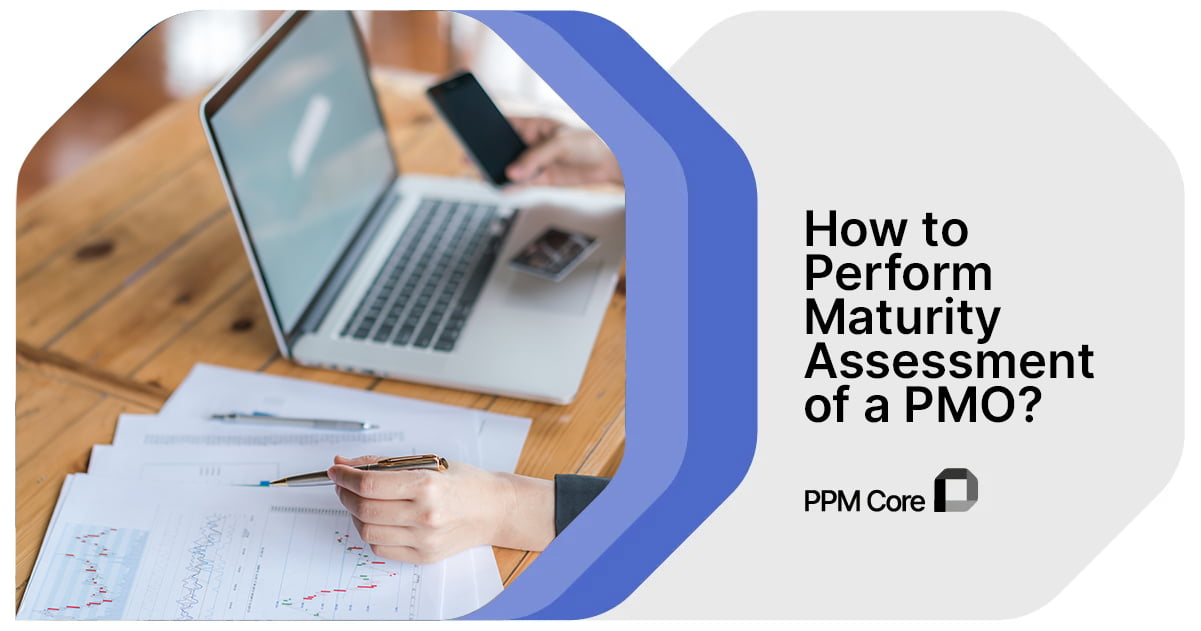PMO Assessment Guide – PMO Maturity Models
This article will provide an overview of the PMO assessment process and the different PMO maturity models.
How to perform maturity assessment of a PMO?
PMO is an important element of any organization and it often refers to Project Management Office, but it can also be a Program Management Office or Portfolio Management Office.
In most cases, PMOs help the organizations to drive strategic goals and achieve business objectives. PMOs also help organizations to establish project related governance processes and facilitate to establish different project management methodologies and practices in an organization. PMO functions can very form organization to organization. It depends on different factors like organization’s structure, project overhead, resources domination, work culture etc.
Organizations can establish PMO for variety of reasons. Also, a PMO can go through different development stages as it matures over time. During initial stage of development, PMOs play a very passive role and over time it starts to play a more active role to drive project related initiatives.
To assess the maturity of a PMO, we can have different models. One of the common ways is use weighted average method to check if PMO is matured or not.
Below are the major criteria based on which PMO maturity can be assessed:
- Availability of Standard Project Management Practices/Processes: This is one of the most important criteria on a PMO. In ideal PMO, there are standard practices, like they can follow PMI framework or agile frameworks whichever suitable for the organization. Also, project management processes need to be well documented and established. Process are very important for projects. In matured PMO, there are established process and SLAs to assign and allocate resources, to govern project budgets, to manage project tasks, project changes and RACI is there to manage each project tasks.
- Project Documentation/Artifact Management: Documentation is an important part of project governance. Matured PMOs maintain project documentation and there are clear guideline for managing projects. Document contents and templates are well defined and PMO creates awareness to follow relevant documentation for every projects. Documentation repository is also there so that project knowledge can be managed throughout the organization.
- Activities performed by the PMO: A matured PMO performed projects by itself. In most cases, these are cross-functional projects where stakeholders are bound to support the PMO as per organizational processes and policies.In case if a PMO is new or does not have enough authority, they only manage project reporting, governance and can also share templates for different project management documents. These PMOs even don’t manage any project directly. They only oversee projects throughout the organization or for any specific function and do project reporting in short span.
- Organizational Hierarchy: A matured PMO can work as a separate function in a matrix organization where PMO head reports to the CEO directly. Also, cross functional projects are managed by the PMO and PMO takes part is driving the strategic initiatives of the organization. In such organization, PMO has considerable level of authority over organization’s strategic initiatives. In some cases, PMOs can work as a sub-function in a function and they only manage functional projects. These PMOs have limited authority and can’t add much value in cross functional projects.
- Project Related awareness and training: A matured PMO works as an advocate and voice for standard project management practices. They provide trainings and conduct awareness sessions regarding project management best practices.

Do you find this article interesting?
Subscribe to our Newsletter for updates on the latest blog articles.
- Resource and Stakeholder Engagement: Resource engagement and resource availability is an important measurement of PMO maturity. In matured PMO, resource allocation policies and processes are there. Cross functional resources are accountable to the PMO and functional managers report to PMO for appropriate resource allocation. In such a PMO, project managers are powerful and have considerable amount of authority over the resources. Stakeholders are also accountable for their deliveries and PMO can seek support from any relevant stakeholders if required.
- Project Reporting and Dashboard: One of the major responsibilities of a PMO is to showcase projects and strategic initiatives to management. Projects always drive organization’s strategic move. Thus management needs to have clear visibility on how the organization is moving towards that direction. PMO reports these strategic projects and initiatives to the management and keeps everything visible to all. Also, PMO reports all project risks and issues for on time support.
To assess the maturity of a PMO, we can use weighted average of above criteria. Based on the scoring, PMO can be categorized in different levels based on maturity.
Some common PMO types are: Supportive (Initial Level PMO), Directive (Moderate Level PMO), Directive (matured PMO).
Normally organizations move from initial level PMO to matured PMO over time. It takes considerable amount of time for this transformation to take place. There could be other level of transformation stages also and it depends how the organization is trying to have to set up there PMO over time.
Below could be a sample calculation on how the assessment can be performed:
| SN | Measurement Criteria | Weightage | Score | Weighted Score | Remarks |
| 1 | Availability of Standard Project Management Practices/Processes | 20 | If the score lies between 10-40%, we can call it a initial level PMO, If it goes above 40% but below 70% we can call it a directive PMO. Matured PMOs should get a score above 70% | ||
| 2 | Project Documentation/Artifact Management | 10 | |||
| 3 | Activities performed by the PMO | 20 | |||
| 4 | Resource and Stakeholder Engagement | 15 | |||
| 5 | Organizational Hierarchy | 15 | |||
| 6 | Project Reporting and Dashboard | 10 | |||
| 7 | Project Related awareness and training | 10 |
PMO maturity assessment is often very much relative exercise, and it can vary based on how we are defining the assessing criteria and how much weightage we are giving each criterion. It is very much subjective and thus different organizations and industries defines it in different ways.
In the above discussion, we have tried to provide a very initial and brief description of the process of PMO maturity assessment. For a real life assessment, it us recommended to consult with expert project management professionals and they can assess how to define criteria and weightage based on situation, as expert PMO professionals can provide a good judgmental assessment of PMO maturity.

